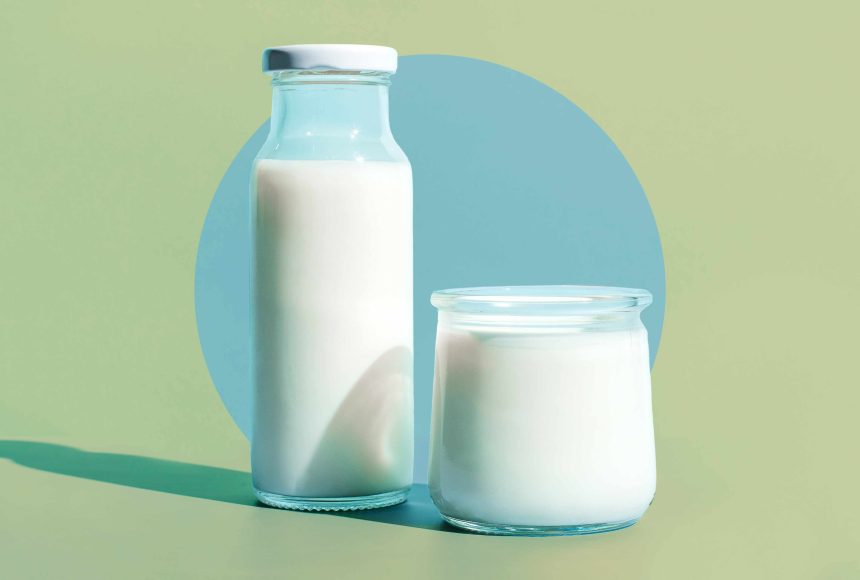If you’re reading this article, there’s a good chance you already have a favorite nondairy milk for your morning cup of coffee or tea, whether that’s creamy oat milk or nutty coconut milk. But when it comes to baking, you need to think about considerations beyond texture and flavor. Cakes, muffins, pancakes, biscuits, custard pies, and enriched breads or rolls can all depend on milk for hydration, browning, and structure.
Generally speaking, you can swap nondairy milk one-to-one for dairy milk in a recipe, but you’re more likely to see success with some than others. Here’s everything to know when baking with nondairy milks.
Best alternative milk for baking: soy milk
For the most successful results, swap in unsweetened and unflavored soy milk one-to-one for dairy milk in your recipes. This dairy alternative, made by soaking, grinding, boiling, and filtering soy beans, has a few things going for it. With eight grams of protein and four grams of fat per serving, it’s about as nutritionally similar to whole and reduced-fat dairy milk as you can get. It’s also one of the few nondairy milks that has the thick, creamy consistency of whole milk. As long as you choose an unsweetened and unflavored variety, it won’t impart any strong or off flavors into your baking.
Runner-up: pea milk
With a similar nutritional profile to soy and dairy milk, pea milk, which is made by extracting pea protein from yellow peas, then soaking and blending it with water, is another good option for baking. The reason we downgraded it to “runner-up” status is because it tends to be thinner and more watery in consistency than whole or even reduced-fat milk. It can work just fine in thinner batters like muffin or pancake batter, but might affect the consistency of doughs that require hydration, like bread and biscuit doughs. If using pea milk, make sure to pick an unsweetened, unflavored variety.
What you should look when baking with a nondairy milk
Similar nutritional content to dairy milk
If your goal is to mimic the functional qualities of dairy milk in a baking recipe, try to match its nutritional composition as closely as possible. Most importantly, look at the protein and fat content of your milk alternative — these are the nutrients that will most impact the structure, texture, look, and mouthfeel. Most dairy milk clocks in at about eight grams of protein per serving; the fat content will depend on whether it’s skim, low-fat, reduced fat, or whole milk, but can range from zero grams to about eight grams of fat.
Neutral or mild flavor
No milk alternative comes all that close to tasting the same as dairy milk — which is not a bad thing! However, a relatively neutral-tasting option like unflavored soy milk or pea milk is best for replicating dairy milk. Be mindful of baking with strongly flavored alternatives like coconut, hemp, and flax milks, which can overpower the other flavors in your recipe.
Some alternative milk brands may add flavorings, salt, and/or sweeteners to their products to enhance or mask other flavors. These additives matter in baking because added sugar can promote browning, and flavorings may interfere with the other flavors in your recipe. For closest results to dairy milk, try to find milk alternatives that don’t list flavor additions in their ingredient statements. Also keep in mind that some alternatives like oat milk are naturally sweet and might add sweetness to your recipe.
Thick, smooth consistency
Milk alternatives vary quite a bit in texture, from thick and creamy soy milk or canned coconut milk to thinner and more watery options like rice, almond, hemp, and flax milk. As a rule of thumb, thicker alternatives are best when trying to replicate the creamier consistency of higher-fat dairy milk.
Some alternative milk brands will blend fats (like sunflower or canola oil), gums (like gellan gum), or emulsifiers into their products to enhance mouthfeel, overall creaminess, and stability that prevents them from separating. These ingredients tend to make milk alternatives thicker and more stable, which helps with structure in baking. Generally speaking, milk alternatives that achieve the consistency of whole or reduced-fat milks with these additives are better options than thinner alternatives without them.
The bottom line: Read nutrition facts panels and ingredient statements when substituting nondairy for regular milk. They’ll tell you just about everything you need to know to make smart swaps.







